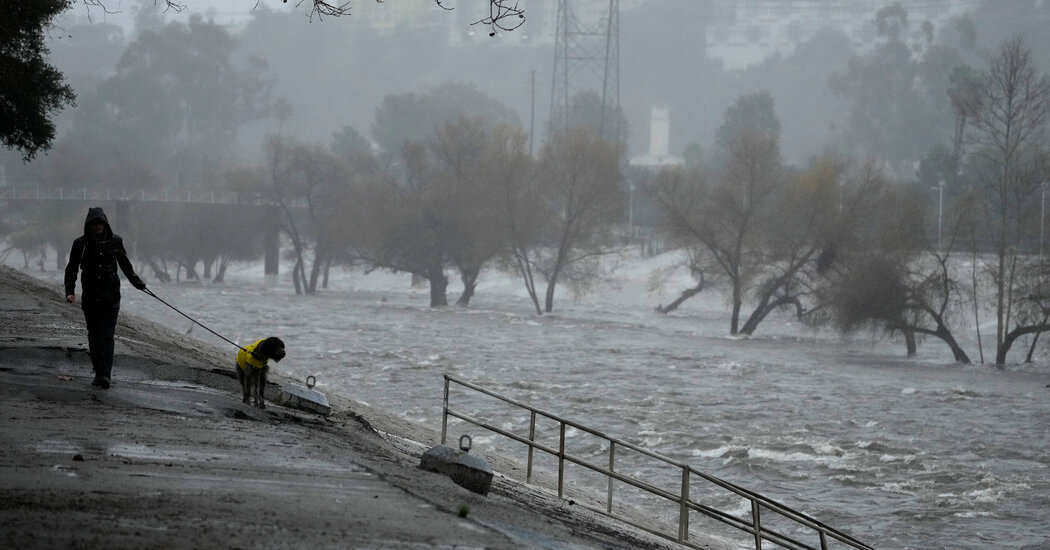
 News
News 
Mudslides and severe flooding were reported in Los Angeles on Monday, as a storm that made its way to Southern California after pummeling northern areas of the state was forecast to bring more heavy rain and winds for another day.
“The major wind and power outages will be the less dangerous part of the storm, relative to what’s about to unfold, and is starting to unfold, in Southern California,” Dr. Daniel Swain, a climate scientist with the University of California, Los Angeles, said during an online briefing on Sunday evening. “If you’re worried about the north, I’m more worried about the south and what’s to come.”
There were mudslides on all canyon roads in and out of Malibu, according to the Los Angeles County Sheriff’s Department. And in the Studio City neighborhood, firefighters had evacuated six people from two homes as water dragged debris down into the area, the Los Angeles Fire Department said. Officials warned that the worst was likely still to come, with heavy rain expected for at least the next 24 hours.
The danger, they said, was not primarily from winds lashing power lines or trees (although thousands were without power as of Sunday night). Rather, the peril stemmed from the trajectory of the atmospheric river, a huge plume of moisture, that meteorologists said was expected to stall over one of the country’s most populated regions.
“I don’t think the rain is going to stop for the next 24 to 36 hours,” Dr. Swain said earlier on Sunday.
On Sunday, meteorologists and officials urged residents of Los Angeles to brace for flooded streets in the valleys and mudslides in the mountains. The entire county, home to almost 10 million people, was under a flash flood warning until midnight.
As of Sunday night, more than four inches of rain had fallen on the Santa Monica Mountains and the totals were rising at rates of more than half an inch per hour, according to Joe Sirard, a meteorologist with the National Weather Service in Oxnard, north of Los Angeles.
And when rain falls in large quantities on the mountains, it rushes downhill, sometimes taking the saturated land with it, and collects in low-lying areas, such as the vast sprawl of the San Fernando Valley, leaving intersections and streets under water. Rivers and streams could swell, overtopping their banks and flooding the neighborhoods surrounding them.
“Many, many hours of rain adds up,” Mr. Sirard said.
Soumya Karlamangla contributed reporting.
24World Media does not take any responsibility of the information you see on this page. The content this page contains is from independent third-party content provider. If you have any concerns regarding the content, please free to write us here: contact@24worldmedia.com